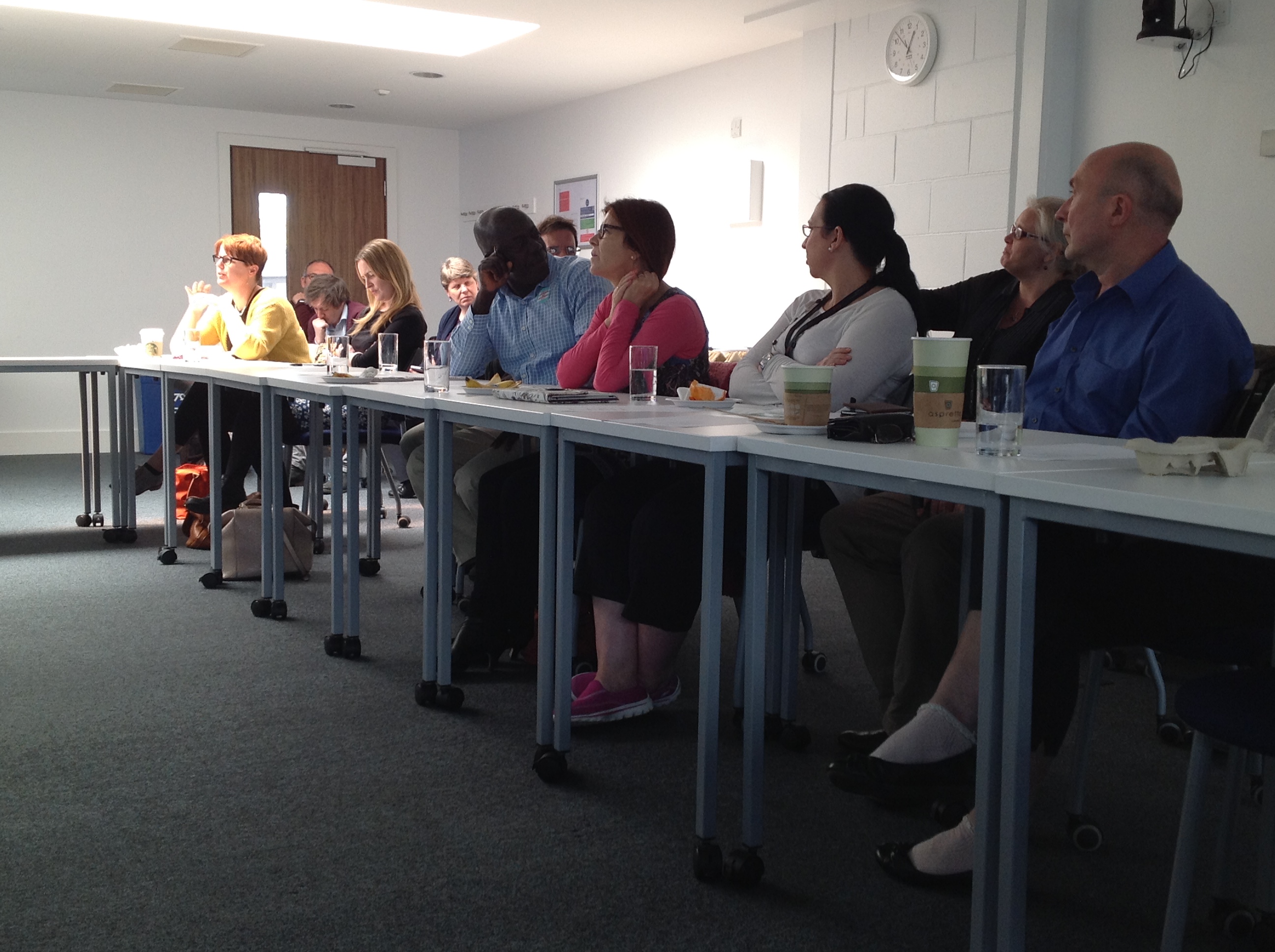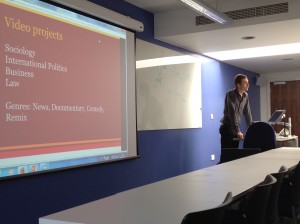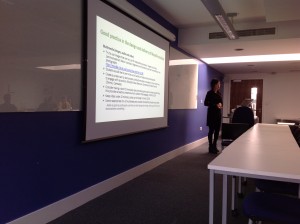The second Educational Multimedia Group meeting was held on 12th May 2015.
Creating 3D Images
The meeting started with Jo Richardson, from the ETT (Educational Technology Team), talking about creating 3D images using photogrammetry, which was presented at the recent Jisc Digifest event.
Photogrammetry is a technique for creating 3D objects by stitching together still photographs. The technique would be useful for any area that involves students exploring physical spaces or objects, enabling them to be examined outside of the environment where they exist. This could potentially involve machinery and technical equipment, buildings (outside and inside) or pieces of artwork.
Jo showed examples created by others, which captured a jet engine and a country landscape:
The multimedia team also had a go at this, using the Autodesk 123 Catch app:
Members of the EMG commented that this could have potential application to familiarise students with the inside of a courtroom, as well as clear benefits to Engineering students to demonstrate equipment. Another area of potential exploration would be to scan learning spaces around the University.
Jo discussed how this technique would be further explored by the multimedia team in order to create higher quality images, experiment with importing and editing in 3D imaging software, and potentially narrating a video demonstration on using the Autodesk software.
Student as Producers
The next presentation by Mo Pamplin, talked about the Student as Producers event at the London School of Economics, which ran in April 2015. Presenters at the event discussed student-led video projects in the areas of Sociology, International Politics, Business and Law.
This involved students being tasked with creating videos, either for the purpose of formative or summative assessment, in various genres such as news, documentary and comedy. The video-making aspect process was not deemed important for most subjects, students were asked to concentrate on the content and delivery of their subject. They produced videos on topics such as copyright law, by highlighting common mistakes made by people in this area, and a video series of business cross-cultural misunderstandings, and reproducing scenarios which addressed these misunderstandings with more sensitivity. This gave them the opportunity to demonstrate language, presentation and technical skills and to apply knowledge in a new arena; taking their academic learning and translating it into a different genre. It also had the benefit of improving their teamwork and problem solving skills, as well as boosting their digital literacy.
Mo reminded those present about the tools available at City, so that our staff may also experiment with this form of assessment.
- iPads and mobile video kits
- Moodle video assignment
- Training and support available at the MILL
- Video blogging (coming soon!)
Module Design and Multimedia
Connie Tse discussed good practice in the design and delivery of Moodle modules, in relation to images, video and audio. She talked about simple ways of improving module design using images, which should convey an idea or concept, rather than be decorative, and the way in which illustrations and diagrams may be more useful than photographs in particular areas. Multimedia also increases student engagement – tools used for screencasting (e.g. Camtasia) or a short embedded video to introduce a topic can help to achieve this.
In particular, Connie talked about how multimedia may help with problem-based learning to recreate real-life scenarios, which is less easily achieved using verbal or written explanation. These may be produced by staff, or be existing resources taken from TV, films or radio using archives such as Box of Broadcasts. Graphics, animation, video, and audio can help students comprehend the situation when physical environment and social context are important to the problem situation. This could involve providing students with demonstrations or guidance on how to proceed through the difficult stages of a solution to a problem, or what to expect during particular interactions, such as those in the field of Nursing. This foreknowledge can serve as scaffolding for the learner and support development of metacognitive skills.
Screencasting
Martin Agombar explored the use of screencasting (creating a video to capture your computer screen), in particular in relation to tackling mathematical problems. Martin worked with problem, which Engineering students are often faced with, involving calculating the acceleration of a sled, taking into account the forces acting upon it. This was done as a quiz question on Moodle. He worked with Arti Agrawal from MACSE and broke down the problem, anticipated the common misconceptions made by students, and created a labelled diagram so that students could visualise the problem.
Martin then demonstrated how screencasting could be used to show students the solution to the problem once they have attempted it. The screencast used the same labelled diagram, with a step-by-step work through, providing visual reinforcement of the diagram, verbal explanation and a written solution to the problem posed. He used the iPad app, Explain Everything, to create the screencast. Explain Everything, as well as other apps, allow teachers to create videos by adding pictures, video, text, speech, scribbles and arrows to produce an engaging resource for students.
Shashi Hirani, from the School of Health Sciences, also spoke about his use of screencasting to demonstrate statistical software (SPSS) to his “Research Methods and Data Analysis” students. He used a combination of screencasting and a computer voice to automatically produce voice files from a script. He combined the video (screencast) files with the audio files to produce the final instructional videos in Windows Moviemaker.
Learning Spaces
Dom Pates talked briefly about the new learning spaces at City, showing the recently produced video by the learning spaces team:
Presentation slides can be found on our Educational Multimedia Group Moodle page which is a self-enrollable module. Anyone who enrols onto the module will be automatically added to the email distribution list for the group, which will be used to arrange future meetings. The next meeting will be held at the start of the academic year.
If you would like to discuss any of the ideas explored in this blog post then please contact the multimedia team by email video@city.ac.uk



